Today’s Current Affairs: 27th October 2025 for UPSC IAS exams, State PSC exams, SSC CGL, State SSC, RRB, Railways, Banking Exam & IBPS, etc
Table of Contents
Asia-Pacific Economic Cooperation:
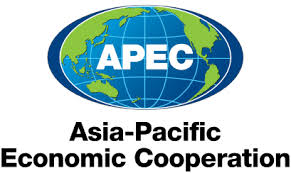
The US President and his Chinese counterpart are likely to meet at the Asia-Pacific Economic Cooperation (APEC) summit in South Korea.
- It is a regional economic forum established in 1989 to leverage the growing interdependence of the Asia-Pacific.
- It aims to create greater prosperity for the people of the region by promoting balanced, inclusive, sustainable, innovative, and secure growth and by accelerating regional economic integration.
- The focus of APEC has been on trade and economic issues, and hence, it terms the countries as “economies”.
- It has been operating on the basis of non-binding commitments, with decisions taken through commitments and consensus undertaken on a voluntary basis.
- There are no binding commitments or treaty obligations.
- Currently, APEC has 21 members.
- The criterion for membership, however, is that each member must be an independent economic entity, rather than a sovereign state.
- The grouping’s current members are Australia, Brunei, Hong Kong, New Zealand, Papua New Guinea, the Philippines, Indonesia, China, Japan, South Korea, Russia, Canada, the United States, Mexico, Peru, Chile, Malaysia, Vietnam, Singapore, Thailand, and Taiwan.
- The APEC Secretariat is based in Singapore and operates as the core support mechanism for the APEC process.
- APEC’s member economies are home to more than 2.9 billion people and make up over 60 percent of global GDP.
Sone River : Bodies of two persons Found
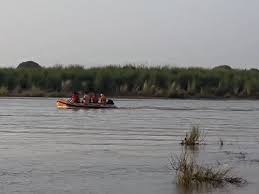
Bodies of two persons, who had gone missing while bathing in the Sone river on the occasion of the Chhath festival, were fished out in Jharkhand’s Palamu district recently.
- The Sone River, also called Son, is a principal southern tributary of the Ganges (Ganga) River after the Yamuna
- It flows through the states of Madhya Pradesh, Uttar Pradesh, Jharkhand, and Bihar.
- It originates in the Amarkantak highlands in Madhya Pradesh, in the east direction of the origin of the Narmada River.
- It then flows in the north-northwest direction through Madhya Pradesh before turning in the east direction where it meets the Kaimur range.
- The river starts flowing in the parallel direction of the Kaimur range in the east-northeast direction through Uttar Pradesh and Bihar and joins the Ganga River just above Patna.
- Total Length: 784 km
- It is a wide and shallow river and forms pools of water in the remaining parts of the river.
- The floodplain of the river is narrow and is only 3 to 5 kilometers wide.
- The river’s flow is seasonal, and the Sone is unimportant for navigation.
- The Sone valley is geologically almost a continuation of that of the Narmada River to the southwest. It is largely forested and sparsely populated.
- The valley is bordered by the Kaimur Range to the north and the Chota Nagpur plateau to the south.
- The main tributaries are the Rihand River and the Koel The other tributaries are the Gopad River and the Kanhar River.
- Dehri is the major town situated on the Sone River.
- Dams and Hydroelectric Projects:
- Bansagar Dam in Madhya Pradesh.
- Rihand Dam in Uttar Pradesh
- Indrapuri Barrage in Bihar.
INS Mahe:
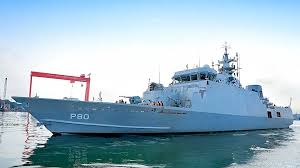
Cochin Shipyard Limited (CSL) recently delivered the first of the eight anti-submarine warfare shallow water craft (ASW-SWC), INS Mahe, indigenously designed and built by it to the Indian Navy.
- It is the first of the eight anti-submarine warfare shallow water craft (ASW-SWC) of the Indian Navy.
- It is indigenously designed and built by the Cochin Shipyard Limited (CSL).
- Designed for a wide range of coastal defence missions, Mahe is equipped for underwater surveillance, search and rescue duties, Low Intensity
- Maritime Operations (LIMO), and complex mine-laying tasks.
- The ship’s design reflects extensive indigenous input, with over 90 percent of components sourced domestically.
- The 78-meter-long vessel is the largest Indian naval warship powered by a diesel engine-waterjet propulsion system.
- This advanced propulsion system ensures superior manoeuvrability and a reduced acoustic signature, crucial in anti-submarine operations carried out in littoral waters.
- Its compact design and high agility make it ideal for operations in shallow waters where conventional destroyers and frigates face navigational constraints.
- These ships are equipped with one RBU-6000 anti-submarine rocket launcher and two sets of light-weight torpedo-tube launchers for launching anti-submarine torpedoes.
Ollo Tribe:
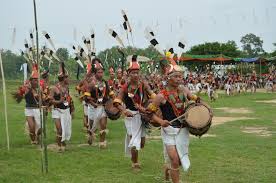
In an effort to promote self-reliance and inclusive growth, the Khonsa Battalion of the Assam Rifles recently launched a skill-based initiative to empower women of the Ollo tribe under Operation Sadbhavana.
- It is an indigenous tribe inhabiting the Laju Circle of the Tirap district in Arunachal Pradesh, India, and parts of Myanmar.
- The Ollo people are also known as Oloh or Lazu Naga.
- Even though they live in two distinct countries, they maintain a close relationship.
- They speak the same dialect, practice the same religion, and follow the same traditions and customs.
- They are organised by clan-based systems with a hereditary chieftaincy system.
- The Ollo society is deeply patriarchal, with well-defined roles based on gender and lineage.
- Family, kinship, and leadership are governed by strict traditional norms that prioritise male succession and property rights.
- Historically known for their distinctive facial tattoos and once-practiced headhunting traditions, the tribe today continues to embrace development while preserving its cultural heritage.
- The Ollos construct houses made of stilts, although the chief’s houses of the villages are constructed with massive carved blocks and wooden pillars.
- According to the 2011 Census, the total population of the Ollo tribe in India is just over 1500.
CMS-03 Satellite:
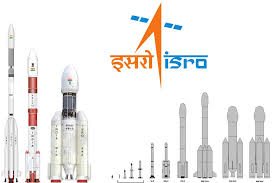
The Indian Space Research Organisation (ISRO) will launch military communications satellite CMS-03 from the Satish Dhawan Space Centre in Sriharikota.
- CMS-03 Satellite is a communication satellite, also known as GSAT-7R, and will be launched by the Launch Vehicle Mark 3 (LVM3).
- It is a multi-band communication satellite that will provide services over a wide oceanic region including the Indian landmass.
- It is weighing about 4400kg, will be the heaviest communication satellite
- It will be launched to Geosynchronous Transfer Orbit (GTO).
- It will provide sharper connectivity and increased bandwidth for civil, strategic, and maritime users.
- Geosynchronous Orbit is a prograde (in the direction of Earth’s rotation), low inclination, High Earth orbit around Earth.
- A spacecraft in this orbit appears at a constant longitude above the Earth.
- The geosynchronous orbit is also called the Clarke orbit, as it was first popularised by the science fiction author Arthur C. Clarke.
- Satellite for armed forces to be launched next week.
CRYODIL:
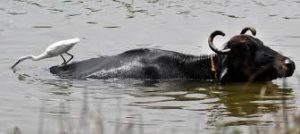
Scientists at the National Institute of Animal Nutrition and Physiology (NIANP), Bengaluru, under the Indian Council of Agricultural Research (ICAR), have developed a ready-to-use, egg yolk-free solution – CRYODIL.
- CRYODIL is an egg yolk-free, ready to use semen extender for buffaloes.
- It is developed by the National Institute of Animal Nutrition and Physiology (NIANP), Bengaluru, under the Indian Council of Agricultural Research (ICAR).
- It has a higher shelf-life (≥18 months), developed for cryopreservation of buffalo semen for the first time in India.
- The post-thaw progressive motility of cryopreserved buffalo sperm in CRYODIL was significantly higher (P≤ 0.05) as compared to that in traditional egg-yolk-based semen extenders.
- Post-thaw sperm movement e how actively sperm can swim after being frozen and thawed, a key factor that determines whether insemination will lead to pregnancy and viability which are critical factors for successful fertilisation.
- CRYODIL is cheaper to produce than traditional egg yolk-based extenders.
National Crises Management Committee:
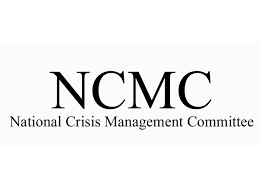
The Cabinet Secretary chaired a meeting of the National Crises Management Committee (NCMC) to review preparedness for the impending cyclone in Bay of Bengal.
- It is established under the Disaster Management Act, 2005 by the central government.
- The committee shall be the apex body for dealing with the situation arising out of a major disaster.
- Composition of National Crises Management Committee:
- It is headed by the cabinet secretary.
- Members will constitute the Union Home Secretary, Defence Secretary, secretary (co-ordination), cabinet secretariat and member and head of department, the National Disaster Management Authority.
- The chairperson of the NCMC can co-opt experts or officers from central/state governments or any organisation, based on the nature of the crisis.
- It shall evaluate preparedness to respond to any threatening disaster situation, emerging disaster situation or disaster and give directions, where necessary, for enhancing such preparedness.
- It shall coordinate and monitor actions of the concerned ministries or departments of the government of India, state governments, national authority, state authorities, governmental and non-governmental organisations in relation to disaster response.
- It shall give directions as may be necessary for the proper coordination and monitoring of disaster response in the country.
White-Cheeked Partridge:
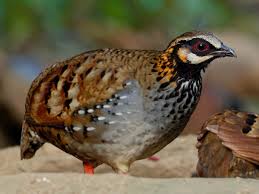
A White-cheeked Partridge (Arborophila atrogularis) was rescued near Dehing Patkai National Park.
- White-Cheeked Partridge is a species of partridge in the family Phasianidae.
- It inhabits dense undergrowth in primary and secondary evergreen forest; this sometimes includes adjacent areas of scrub, bamboo, grassland and cultivated land.
- In India, the species occurs generally at altitudes below 750 m, but may be found at up to 1,220 m in South-East Asia.
- It is found mainly in Northeast India, northern Myanmar, and northeast Bangladesh.
- It is a terrestrial and non-migrant
- It is principally threatened by habitat loss and persecution.
- Conservation Status: IUCN: Near Threatened
Dehing Patkai National Park:
- It is located in the state of Assam.
- It is situated at the foothills of Patkai Hill Ranges, on the banks of the River Dehing and adjacent to the Namdapha Wildlife Sanctuary.
- It is often referred to as the ‘Amazon of the East‘owing to its expanse and the thick forest.
- The climate of the region is mostly tropical with an annual rainfall of more than 4,000 mm.
India’s First National Policy on Geothermal Energy:

The Ministry of New and Renewable Energy (MNRE) has launched India’s first National Policy on Geothermal Energy 2025, aiming to tap India’s vast but underutilized geothermal potential to advance the nation’s Net Zero 2070 commitment, ensure energy security, and diversify its renewable energy mix.Geothermal energy refers to the heat derived from the Earth’s interior, which can be used for heating buildings, and generating electricity. It is considered a renewable energy source because the Earth continuously produces heat within its core.
National Geothermal Energy Policy 2025:
- The policy encompasses all major aspects of geothermal energy development including:
- Geothermal Resource Assessment
- Power Production Systems
- Direct-use Applications
- Ground (Geothermal) Source Heat Pumps (GSHP)
- Utilization of abandoned oil and gas wells for geothermal energy extraction is encouraged.
- Extraction of valuable mineral by-products like silica, borax, cesium, and lithium will be regulated under the Mines and Minerals (Development and Regulation) Act (MMDR Act),1957 with applicable royalties.
- Promotion of Emerging Tech: It also promotes emerging and innovative technologies such as:
- Enhanced Geothermal Systems (EGS)
- Advanced Geothermal Systems (AGS)
- Geothermal energy storage
- Offshore geothermal wells
- Geothermal Resource Data Repository: Establishment of a comprehensive geothermal resource data repository through inter-ministerial collaboration with agencies such as the Ministry of Mines, Ministry of Earth Sciences, Geological Survey of India (GSI), and National Data Repository (NDR).
- Permission for resource assessment surveys will be granted to developers for R&D and feasibility studies.
- Fiscal & Financial Support: Under the Renewable Energy Research and Technology Development Programme (RE-RTD):
- Up to 100% financial support for government and non-profit research institutions.
- Up to 70% support for private sector entities including start-ups and manufacturing units.
- Additional support mechanisms:
- Inclusion under the Indian Carbon Credit Trading Scheme.
- Waiver of open access charges.
- Eligibility under Renewable Purchase Obligations (RPOs).
- State-Level Guidelines: State/UT governments will have the authority to issue:
- Exploration leases (valid for 3–5 years)
- Development leases for power generation or direct-use (valid for up to 30 years)
- Establishment of a single-window clearance mechanism through designated state nodal agencies.
Rani Chennamma of Kittur:
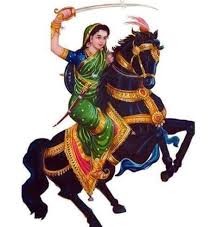
The Government of India marked 200 years of Rani Chennamma’s historic victory at Kittur (1824) with the release of a special Rs 200 commemorative coin celebrating her courage and leadership against British rule.
- Rani Chennamma was born on 23rd October 1778, in Kakati village (Belagavi district, Karnataka) to a Lingayat family.
- She was trained in horse riding, sword fighting, and archery from a young age.
- She married Raja Mallasarja of Kittur and later became queen after his death in 1816.
- Revolt of Kittur (1824): After her husband and son’s death, she adopted Shivalingappa as heir to the Kittur throne.
- The British East India Company refused to recognize the adoption, attempting to annex Kittur, an early instance of what later became the Doctrine of Lapse.
- Rani Chennamma refused to surrender and led an armed rebellion against British officer John Thackery, defeating him in the first battle.
- However, the British retaliated with a larger force under Colonel Deacon, captured the fort, and imprisoned her at Bailhongal Fort, where she died in 1829.
- She is one of India’s earliest freedom fighters, preceding the Revolt of 1857 by over three decades.
- Rani Chennamma is revered as a symbol of courage, justice, and women-led resistance against colonial rule in Karnataka and beyond.
- Her story lives on through folk songs (Janapada), ballads, and theatre, along with the annual Kittur Rani Chennamma Utsav.
China’s Wildlife Diplomacy:
China’s “Wildlife Diplomacy” has entered a new phase, with the loan of golden snub-nosed monkeys(Rhinopithecus roxellana) to European zoos (in France and Belgium) under a 10‑year agreement. These monkeys, unique to central China, are being positioned as new “animal ambassadors” potentially a successor to China’s famous panda diplomacy. China’s long‑standing use of animals as tools of diplomacy established the precedent for wildlife‑based engagement. China’s Panda Diplomacy: It began in 1957 when China gifted pandas to the Soviet Union, later sending them to the US in 1972. Over time, this evolved into long-term leasing arrangements linked to conservation and scientific research collaborations. These initiatives aim to strengthen scientific ties and enhance China’s global image through wildlife diplomacy amid geopolitical tensions.
Lessons for India: India as a nation rich in biodiversity, India can examine the role of iconic species (e.g., Bengal tiger, Indian rhinoceros) in its cultural diplomacy and conservation partnerships.
Yuge Yugeen Bharat National Museum:
The first gallery of the Yuge Yugeen Bharat National Museum is expected to open by end-2026, the museum is set to become the largest in the world, replacing the existing National Museum. Yuge Yugeen Bharat National Museum is being developed by the Ministry of Culture as part of the Central Vista redevelopment project complementing initiatives like the PM Museum, National Archives Digitisation, and Cultural Mapping of India. It will be located in the North and South Block buildings of the Central Vista. It is themed on 5,000 years of Indian civilization, reflecting its perennial nature.
Garbage Café:
Prime Minister of India, in Mann Ki Baat, praised the innovative ‘Garbage Café’ initiative of Ambikapur Municipal Corporation, Chhattisgarh, which offers meals in exchange for plastic waste a model combining waste management with social welfare.The Garbage Café is a unique initiative by the Ambikapur Municipal Corporation under the Swachh Bharat Mission to combat plastic pollution and promote zero-waste living. It encourages citizens to deposit plastic waste in return for food, blending environmental conservation with human welfare.Individuals depositing 1 kg of plastic waste receive a free meal; 0.5 kg earns them a snack. The collected plastic is recycled or used in road construction, reducing landfill pressure. Run with support from women self-help groups, promoting employment and civic participation.Reinforces circular economy goals through behavioural change and citizen engagement. Ambikapur’s success has inspired replication in states like Kerala and Madhya Pradesh.
Maha MedTech Mission:
The Anusandhan National Research Foundation (ANRF), in collaboration with the ICMR and the Bill & Melinda Gates Foundation, has launched the Maha MedTech Mission to boost India’s medical technology ecosystem. The Mission for Advancement in High-Impact Areas (MAHA)–MedTech is a national initiative to accelerate innovation, manufacturing, and commercialization of cutting-edge medical technologies in India, enhancing access and affordability in healthcare. Jointly launched by the Anusandhan National Research Foundation (ANRF), the Indian Council of Medical Research (ICMR), and the Bill & Melinda Gates Foundation. Aim is to reduce India’s dependence on high-cost medical imports, strengthen domestic capacity, and ensure equitable access to affordable and high-quality medical devices and diagnostics aligned with national health priorities such as tuberculosis, cancer, and neonatal care.
Delhi Government Partnered With IIT-Kanpur To Conduct Cloud Seeding:
The Delhi government partnered with IIT-Kanpur to conduct cloud seeding experiments to combat rising post-monsoon air pollution. However, experts from the Ministry of Earth Sciences have cautioned that the absence of rain-bearing clouds during the post-monsoon season makes the timing scientifically unsuitable, casting doubt on the effectiveness of the initiative.Cloud seeding is a weather modification technique aimed at enhancing precipitation (rain or snow) from existing clouds.It involves dispersing substances such as silver iodide, potassium iodide, sodium chloride, or dry ice (solid CO₂) into clouds using aircraft. These particles act as cloud condensation nuclei (CCN) or ice nuclei (IN), mimicking the structure of ice and prompting supercooled water droplets in the clouds to freeze. As these ice crystals grow larger and heavier, they eventually coalesce and fall to the ground as rain or snow. Cloud seeding cannot create clouds, but works only when there are naturally formed clouds with sufficient moisture.
Cyclone Montha:
The India Meteorological Department (IMD) has issued a high alert for Andhra Pradesh and Odisha as Cyclone Montha is set to make landfall between Machilipatnam and Kalingapatnam near Kakinada.Cyclone Montha is a tropical cyclonic storm forming over the southeast Bay of Bengal, expected to intensify into a Severe Cyclonic Storm (SCS) as it approaches India’s east coast, bringing heavy rainfall and strong winds across Andhra Pradesh, Odisha, and adjoining states. The storm originated as a deep depression over the southeast Bay of Bengal, gaining strength due to warm ocean temperatures, low vertical wind shear, and high humidity, which are conducive conditions for cyclone formation in this region.
Aurangabad Railway Station Renamed Chhatrapati Sambhajinagar:
The Aurangabad Railway Station in Maharashtra has been officially renamed Chhatrapati Sambhajinagar Railway Station, as per a notification by the Central Railway. The station now carries the new code ‘CPSN’, and falls under the Nanded Division of South Central Railway. The renaming follows the earlier change of the city’s name from Aurangabad to Chhatrapati Sambhajinagar in 2022, a decision taken by the Eknath Shinde-led state government.The original name Aurangabad referenced Mughal emperor Aurangzeb, a controversial figure in Maharashtra’s Maratha history. The new name honours Chhatrapati Sambhaji Maharaj, son of Chhatrapati Shivaji Maharaj and the second ruler of the Maratha Empire.
Vigilance Awareness Week 2025:
India commenced its observance of Vigilance Awareness Week 2025 from 27 October, rallying citizens and public institutions around the theme: “Vigilance – Our Shared Responsibility.” Celebrated annually in the last week of October to commemorate the birth anniversary of Sardar Vallabhbhai Patel (31 October), this initiative aims to foster greater public awareness about the importance of integrity, accountability, and ethical conduct in public life. The campaign serves as a nationwide call to action to fight corruption and reinforce transparent governance, with active participation from ministries, departments, public sector units (PSUs), banks, schools, and civil society. The 2025 theme, “Vigilance – Our Shared Responsibility,” emphasizes that the fight against corruption and unethical practices is not the burden of a single agency but a collective societal duty.
India Joins Spain’s Ocean Sky 2025 as First Non-NATO Nation:
The Indian Air Force (IAF) has become the first non-NATO country to participate in Exercise Ocean Sky 2025, a high-intensity multinational air combat drill hosted by the Spanish Air Force. Held at Gando Air Base, Canary Islands, the exercise runs from October 20 to 31, 2025. This historic inclusion underscores India’s emergence as a credible aerospace power and reflects its growing strategic partnership with Spain and other NATO countries.
Reliance and Meta Launch ₹855 Crore AI Joint Venture:
Reliance Industries and Meta Platforms have announced a ₹855 crore joint venture to build enterprise-grade AI products. The new entity, named Reliance Enterprise Intelligence Limited (REIL), will develop and scale AI solutions for business clients in India and selected global markets. This collaboration is seen as part of a larger push towards “Made-in-India” digital infrastructure, amid ongoing India–US trade tensions and increasing global demand for trusted AI ecosystems.
East Timor Becomes 11th Member of ASEAN:
East Timor also known as Timor-Leste officially became the 11th member of the Association of Southeast Asian Nations (ASEAN). This historic inclusion took place during the ASEAN Summit in Kuala Lumpur, where the country’s flag was raised alongside those of the other member states. The moment represents both a symbolic and strategic milestone for the young democracy, long striving for regional integration since its independence in 2002.East Timor’s ASEAN membership comes after a 14-year application process, first initiated in the early 2000s. The country’s current President, Jose Ramos-Horta, originally envisioned ASEAN membership as early as the 1970s, during the country’s fight for independence from Portuguese and later Indonesian rule. East Timor was a Portuguese colony for over 300 years, until Portugal’s abrupt withdrawal in 1975. It was then occupied by Indonesia for 24 years in a bloody conflict before finally gaining full independence in 2002.
RBI Launches HaRBInger 2025 Global Hackathon:
The Reserve Bank of India (RBI) has officially launched HaRBInger 2025 – Innovation for Transformation, its fourth global hackathon, aiming to promote the development of secure, inclusive, and identity-driven banking solutions. The hackathon reflects RBI’s commitment to leveraging emerging technologies for the financial sector and enhancing trust and integrity in digital banking.The central theme for HaRBInger 2025 is: “Secure Banking: Powered by Identity, Integrity, and Inclusivity”
Rashtriya Vigyan Puraskar 2025:
The Indian government announced the recipients of the Rashtriya Vigyan Puraskar 2025, the nation’s highest civilian honour for contributions to science, technology, and innovation. Instituted to celebrate excellence across diverse scientific fields, these awards aim to foster a culture of research and innovation in India.Vigyan Ratna (Posthumous) was given to Prof. Jayant Vishnu Narlikar – Awarded posthumously for his outstanding contribution to Physics.
The Rashtriya Vigyan Puraskar is conferred in four major categories:
- Vigyan Ratna – For lifetime achievements in science
- Vigyan Shri – For exceptional individual contributions
- Vigyan Yuva–Shanti Swarup Bhatnagar – For young scientists (under 45 years)
- Vigyan Team Award – For collaborative research efforts




